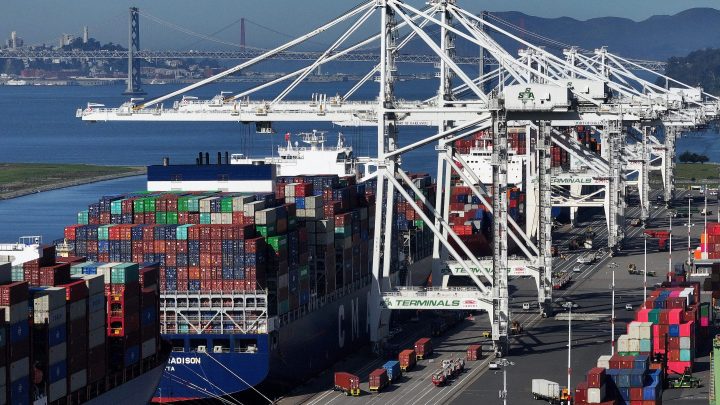
Core capital goods spending rose in April, a positive sign for future production
Core capital goods spending rose in April, a positive sign for future production

The Census Bureau at the Commerce Department reported Friday that new orders for durable goods rose 0.7% in April from the month before. That’s the third increase in a row.
If you dig into the data, you’ll see that new orders for what economists call core capital goods were up 0.3% for the month. This is spending on big, one-off purchases and excludes aircraft and defense equipment, which are very expensive and can skew the data. The measure gives a sense of how much businesses are spending on things that make things — which may be an indication of what they’re planning to produce in the future.
Not only were new orders for core capital goods up for the month, they were also up 1.2% year over year.
“So I think that’s a good sign that businesses are starting to kind of invest again,” said Bank of America economist Stephen Juneau.
Juneau said that last year, with money from the Inflation Reduction Act and CHIPS and Science Act, there was a lot of investment in structures, such as factories and warehouses. But not as much on equipment.
“So we built these warehouses, and now maybe we’re starting to see those warehouses get stocked with machinery,” Juneau said. “You need that machinery, ultimately, to make those warehouses make goods.”
Juneau pointed out some of the rise in spending likely reflects higher prices for that machinery.
But John Diamond, a fellow at Rice University’s Baker Institute, said even when taking that into account, the rise in core capital goods spending remains a positive sign for future production.
“It’s also a positive for bringing inflation down,” he said.
Why? It’s a matter of supply and demand, Diamond explained. If manufacturers invest more in equipment and then produce more goods, “then consumers will have more choices. There won’t be as much competition for a smaller number of goods, and it’ll restrain price increases.”
Diamond said that the numbers in this report are often revised substantially, so he takes them not just with a grain of salt, but a few shakes of the salt shaker.
Meanwhile, economist Oren Klachkin at Nationwide Mutual pointed out that high interest rates continue to make it pricey for businesses to borrow to buy expensive equipment.
Also, he said, access to funding through the banking system is “fairly limited because bank lending standards are still relatively tight.”
In many cases, these capital goods are some of the most costly items a company will ever purchase. But businesses don’t buy a giant machine or a truck just to use it next month, Klachkin explained. They buy it because they’ll be able to use it for the next decade.
There’s a lot happening in the world. Through it all, Marketplace is here for you.
You rely on Marketplace to break down the world’s events and tell you how it affects you in a fact-based, approachable way. We rely on your financial support to keep making that possible.
Your donation today powers the independent journalism that you rely on. For just $5/month, you can help sustain Marketplace so we can keep reporting on the things that matter to you.











